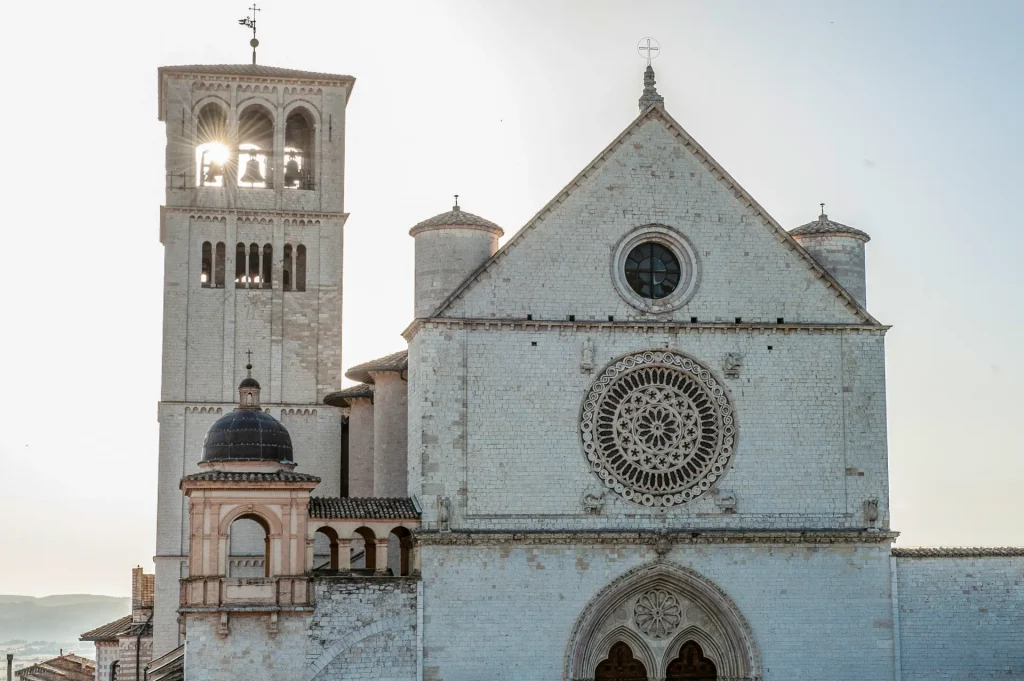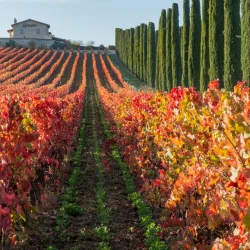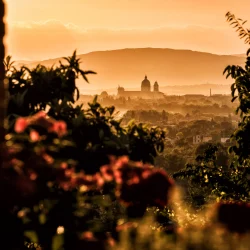
Basilica of St. Francis of Assisi: its history
The Basilica of St. Francis of Assisi, the place that has preserved the mortal remains of the Seraphic saint since 1230, is one of the most important places of worship in Italy and the world. In 2000, the basilica was included in the UNESCO World Heritage List.
Basilica of St. Francis of Assisi: history
The foundation stone of the Basilica of St. Francis of Assisi was laid on July 16, 1228, just two days after Francis’ death and the day after he was proclaimed a saint by Pope Gregory IX. According to tradition, it was Francis himself who indicated exactly where he wished to be buried: the lower hill of the Umbrian city where the lawless, those condemned by justice, were customarily buried.
The church represents one of the cornerstones of the spread of Gothic in Italy. In addition to being the burial place of St. Francis, it assumed fundamental importance for the papacy, which saw in the Franciscan order a great ally in strengthening ties with the humbler and more popular classes. Construction of the basilica was begun in 1228 by Pope Gregory IX and then consecrated in 1253 by Pope Innocent IV.
Over the centuries the basilica has established itself as one of the most important pilgrimage destinations in the world. Between 1965 and 1983 restoration work was carried out to consolidate the structure and safeguard its marvelous frescoes. The 1997 earthquake caused deep injuries to the upper basilica: the vault collapsed in two places, there was damage to the south tympanum of the transept, and 130 square meters of frescoes were shattered. Following the earthquake, the basilica of St. Francis of Assisi was closed for two years, during which time restoration work was carried out.
St. Francis of Assisi: the Lower Basilica
The Basilica of St. Francis of Assisi consists of two overlapping churches: the lower and the upper. The lower church was begun in 1228 and finished two years later, when the body of St. Francis was moved there, laid in a sarcophagus under the high altar, at the spot where it is still preserved today inside a small crypt. The decorations of the lower church include works by the most distinguished artists of the time, such as Giotto, Cimabue and Simone Martini.
St. Francis of Assisi: the Upper Basilica
The upper church of the Basilica of St. Francis of Assisi has a “gabled” facade: the upper part is decorated with a central rose window, while the lower part is enriched by a majestic splayed portal. A bell tower, once cusped, has been erected on its left side. A model of inspiration for Franciscan churches, the Upper Basilica contains the most complete collection of medieval stained glass windows in Italy.
The frescoes of the Basilica of St. Francis of Assisi.
The frescoes that decorate the Basilica of St. Francis of Assisi represent immortal masterpieces of Italian art. The most famous are those that form the “Stories of St. Francis” pictorial cycle in the nave of the upper church. Divided into 28 episodes, the scenes recount the most significant moments in the life of the seraphic saint.
Basilica of St. Francis of Assisi: hours
The Basilica of St. Francis of Assisi can be visited during the following hours:
Upper Church: 8:30 a.m. – 5:50 p.m.
Lower church: weekdays 8:30 a.m. – 4:30 p.m., holidays 1:15 p.m. – 4:30 p.m.
Tomb of St. Francis: weekdays 6 a.m. – 6 p.m. (Wednesday closing 5:30 p.m.), holidays 6 a.m. – 7 p.m.


